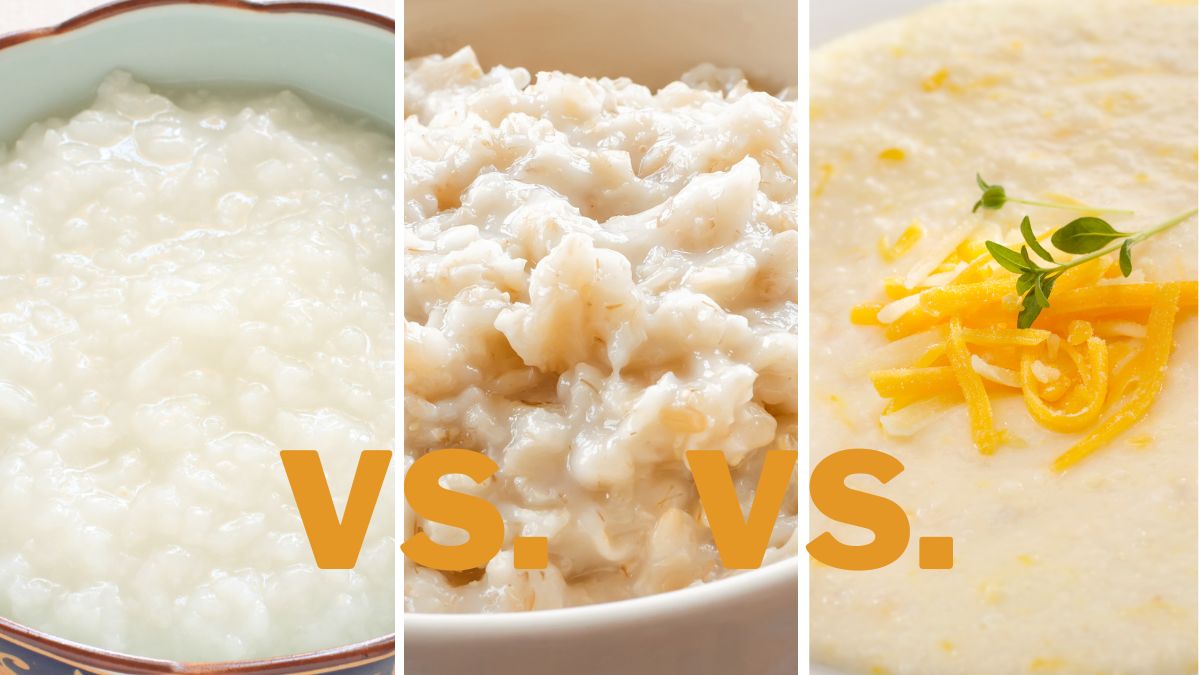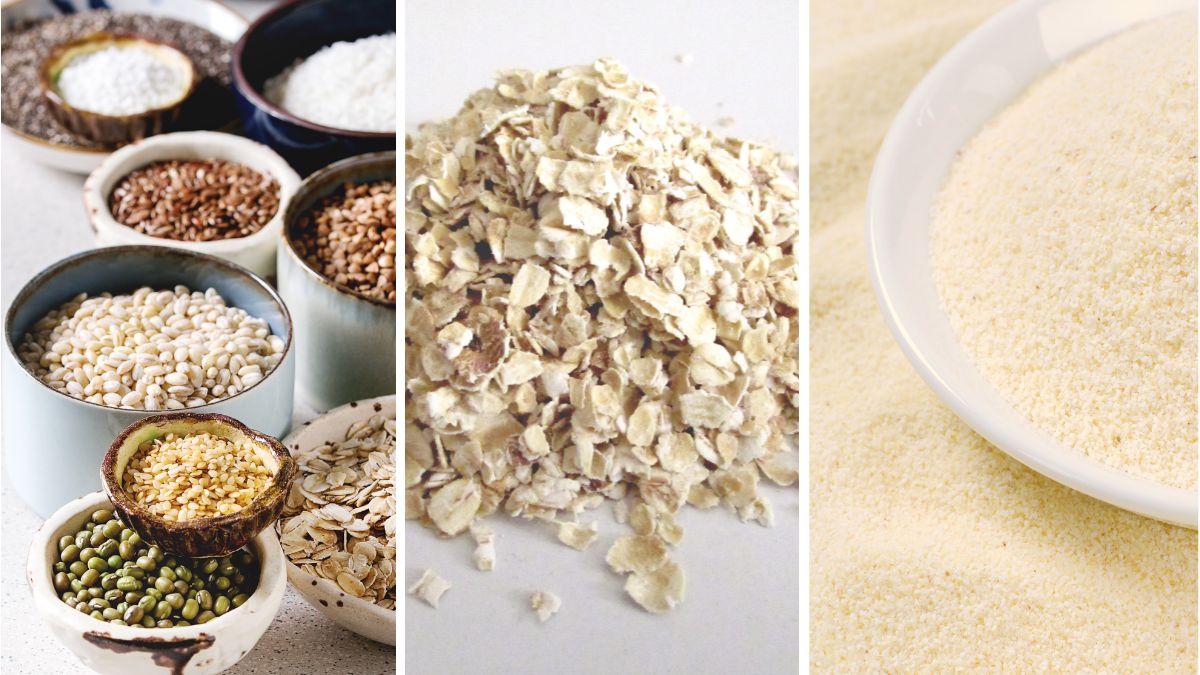Porridge vs. Oatmeal vs. Grits: Differences

While porridge, oatmeal, and grits are all similar hot cereals, they do differ in ingredients, preparation, taste, and nutrition. I often have these for breakfast, but the reason I like them the most is because they can also make the perfect dinner any time of the week. So, I’ve explored all three options more than once, and personally, I enjoy all three for different reasons. Porridge is comforting, oatmeal gives me an energy boost, and grits satisfy my savory tooth. But what are the differences between porridge, oatmeal, and grits?
Porridge is made with various grains; oatmeal uses rolled or instant oats, while grits use cornmeal. Grits also tend to be a looser, mushier consistency. Nutritionally, oatmeal and grits are high in fiber, manganese, and several B vitamins. Oatmeal also contains protein and iron.
The variety is what makes breakfast interesting. Hopefully, the following article will help you better understand these familiar but often confused hot cereals. Porridge, oatmeal, and grits — they’re all hot cereals, but what exactly is the difference between them?
Ingredients and Preparation

Porridge typically refers to a dish made of grains, like oats or rice, boiled in water or milk. Oatmeal is made of hulled oat grains that have been flattened into flakes. Grits are made from ground corn, usually hominy grits.
In terms of ingredients, porridge can be made with various grains, while oatmeal uses rolled or instant oats, and grits use cornmeal. To prepare porridge or oatmeal, simmer the grains in liquid until thick and creamy. Grits are also simmered but tend to be a looser, mushier consistency.
Taste and Texture
When it comes to taste and texture, these hearty breakfast grains differ quite a bit.
- Porridge tends to be the thickest of the three, with a creamy and starchy consistency. I like making porridge with rolled oats, milk or water, and a bit of honey for sweetness. The oats soften but still retain a slight chewiness that I find comforting.
- Oatmeal is usually thinner than porridge, with a smoother and silkier mouthfeel. Steel-cut oats, also called Irish oatmeal, produce hearty and robust oatmeal. Quick oats and instant oats create a lighter, more delicate oatmeal. I prefer to top my oatmeal with fresh or frozen fruit, nuts, and a drizzle of maple syrup.
- Grits have the finest texture, resembling polenta. Corn grits are made from ground corn and have an earthy, mildly sweet flavor. Grits are often described as creamy but can become quite thick and starchy. I season my grits with cheese, scallions, hot sauce, or brown sugar.
Overall, taste-wise, porridge and oatmeal tend to be mild and slightly sweet, while grits are usually savory.
In the end, it comes down to personal preference. Porridge gives you hearty wholesomeness, oatmeal offers smoothness and versatility, and grits provide comforting simplicity. Why not try them all?
I know, I know, some people may not like these three, but it may just be because of what they combine them with. For example, look at all the yummy oatmeal combinations in this video — have you tried your oats like so?
Nutritional Value
When it comes to nutrition, oatmeal tends to edge out grits and porridge. As someone who enjoys all three, I like to think about the health benefits of each and try to incorporate them into my diet.
Oatmeal is the highest in fiber, with one cup containing 8 grams. This soluble fiber can help lower cholesterol and control blood sugar levels. To boost the fiber in grits and porridge, stir in nuts, seeds, dried or fresh fruit. [1]
Oatmeal also leads in the protein department, while grits have about half, while porridge typically has the lowest percentage per cup. Adding Greek yogurt, milk, nuts, or nut butter can increase the protein in all three. [2]
All three options can be made from whole grains, depending on your purchase.
Whole-grain oats, cornmeal for grits, and grains like wheat or barley for porridge provide more nutrients than the refined versions. Look for labels that say “100% whole grain” or list a whole grain as the first ingredient.
Oatmeal, grits, and porridge also contain manganese, selenium, B vitamins, iron, and magnesium. Oatmeal tends to be highest in these nutrients as well. [3]
Ultimately, the best option for you depends on your nutritional needs and personal tastes. Any of these whole-grain breakfast porridges can be part of a balanced diet. I like to switch it up and have oatmeal a few times a week, grits on the weekends, and porridge when I want something different.
Adding mix-ins boosts nutrition and keeps things interesting.
Porridge, oatmeal, and grits are three classic comfort foods that have been sustaining people for centuries. When made from whole grains and topped with beneficial add-ins, any of these can be a wholesome way to start your day. Why choose just one when you can enjoy all three? I say porridge for some, oatmeal for others, and grits for one and all.
How do you enjoy them — sweet or savory? I would love to know your meal combinations with these three, so please write them down in the comments below!
